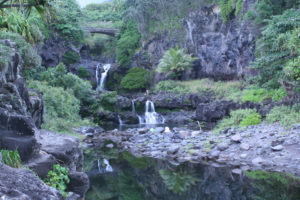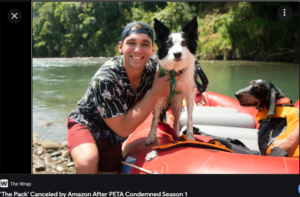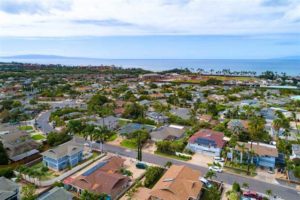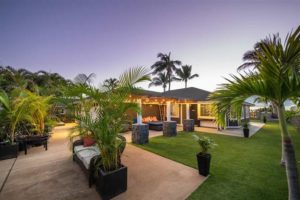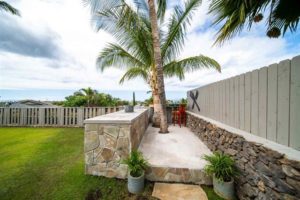Readers: the above post on the Nextdoor social media site generated an amazing response from Buck Joiner, a community leader and father on Maui with lots of great suggestions for Maui things to do with teenage kids. Buck is an esteemed retired international troubleshooter on nuclear plants (nuclear engineer) and community activist on Maui since 1983 whose insights are widely respected across the island. Here are Buck’s lengthy suggestions for the most fun and memorable things to do with your teenage kids on Maui (take at least 10 minutes – not a quick read haha) and Buck has graciously allowed me to post this on my web site for general consumption to the visitor public:
Buck Joiner — Maui Meadows
Check in with Habitat for Humanity. LEARN something lifetime useful. Put in some SERIOUS Dad time doing lifetime memory things. Go hiking, LOTS of options. Campout at “7 Sacred Pools” (that’s the haole name). Real name is Oheo Gulch. There are more than 7 and not sacred. Hike all the way up and swim in as many pools as possible. If you don’t have camping gear, contact me. Go snorkeling and find turtles and sharks. Learn how to skim or board board. If you don’t know how, at the beach, find somebody who is good at it and ask for lessons. WARNING, body boarding can be paralyzing! Snorkel at Molokini!!!! (This is a MORNING trip! Afternoon trips advertized as “Molokini” actually go to “Coral Gardens” which is 0.8% of Molokini.) Bake bread together or make cookies. Grill steaks. Teach him how to change a tire. Attend EVERY cultural event that is not your own, Japanese, Chinese, Filipino, Korean. Attend and explore a different religion, something neither of you know anything about. Try foods neither of you have ever eaten. Do NOT go to McDonalds or any other chain restaurant EVER!!! Thereis NO memory there. What event is happening at the Maui Cultural Center? Not exactly your taste? So WHAT!!! (If you find Kathy Collins performing ANYWHERE, >>>>GO there!!! Gut busting funny lady!) Attend LIVE theater. Visit a museum, there are several. Go to LEARN. What is he interested in? Do some of that. What does he need to know that he doesn’t? Do LOTS of that. What have NEITHER of you done? Do THAT. Want a MEGA memory maker? Hike the pali trail from Maalaea to Ukumehame…under a FULL MOON, with headlamps and hikiing poles. Eat mangos till you burst. Eat every fruit you or your son has never tried. The PRIMARY objective is to send your son home with the most INCREDIBLE experience of his lifetime. It is not about spending money or keeping him occupied. It is about making exciting memories of bonding LOVE that last forever! …for BOTH of you.
PART TWO. ABSOLUTELY, POSITIVELY, WITHOUT FAIL, GREET YOUR SON WITH A LEI AND MAKE CERTAIN HE HAS ONE WHEN HE LEAVES!!!!! Sail on a REAL sailboat, one that moves and leans with the wind, not a catamaran with a big motor. Find the smallest sailboat you can, ideally, something 40 feet or under. Zip-line is a MUST. The full island helicopter tour is incredible, but it costs one arm, two legs, one eye, and a kidney. Obviously you teach him as much about Hawaiian culture as you know. And, Japanese, and Chinese, and Korean, and Filipino, and Portuguese and Somoan, and and, and Pidgin English. If you don’t know enough, learn more! Take him to a luau. If you don’t know, understand, and love poi, LEARN what it is and why it is INCREDIBLY important and how to eat it. HINT, it is the first food babies can eat, and the last food the elderly can digest to sustain life. Listen to an audiobook together, one ear pod for each of you; Harry Potter? (Downloadable for free from the Hawaii Public Library if you have a library card.) Watch sunrise at Haleakala (you need a reservation). Watch the green flash at sunset. (If you don’t know how, kicked my butt to get the damn video made.) Go horseback riding at Mendes Ranch or others. Go ocean fishing with somebody who knows how and when… from the shore, or in a boat… with somebody who knows WHEN and HOW. Paddle a Hawaii canoe with one of the clubs. Visit a Sunday drum circle with the really weird people ( why am I not there?) Learn to play a musical instrument together, something more difficult than a triangle and easier than a trombone. Read a book together. One reads the other listens, switch. Create something artistic together. Repair something together; sewing on a button, fixing a bicycle flat, epoxy, nails, staples, glue, electrical, just fix it together. Something broken that isn’t fixable? Take it apart together before you throw it away. Learn about identifying fish, or flowers, or trees. Try smoothies at different locations. Attend the Makawao parade and rodeo around the 4th of July. Attend a Bon Dance. Don’t know what that is? That’s why you’re going! When you get there, ask anybody to please explain. Did I mention, it is about making exciting memories of bonding LOVE that last forever! …for BOTH of you.
reprinted courtesy Nextdoor social media and Buck Joiner, Maui Meadows 5/15/22



